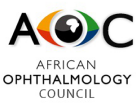Original Research
Global and local contributions to corneal surface curvature: a simple model
African Vision and Eye Health | South African Optometrist: Vol 67, No 1 | a178 |
DOI: https://doi.org/10.4102/aveh.v67i1.178
| © 2008 W. F. Harris
| This work is licensed under CC Attribution 4.0
Submitted: 17 December 2008 | Published: 17 December 2008
Submitted: 17 December 2008 | Published: 17 December 2008
About the author(s)
W. F. Harris, Department of Optometry, Auckland Park Campus, University of Johannesburg, South AfricaFull Text:
PDF (426KB)Abstract
Variations in corneal surface powers reflect variations in the geometry of the cornea. In particular one can regard corneal surface curvature as a combination of local and global effects. A simple mathematical model of the cornea is presented which makes use of measurements of the curvature of the anterior and posterior surfaces to decompose the curvature into global and local contributions. The model gives insight into the source of variations in keratometric measurements, lids and eye turn, perhaps, for global effects and the tear film, perhaps, for local effects. The model also takes account of the thickness of the cornea. A numerical example is presented.
Keywords
corneal curvature; local; global; dioptric power matrix; variation
Metrics
Total abstract views: 3089Total article views: 1963


